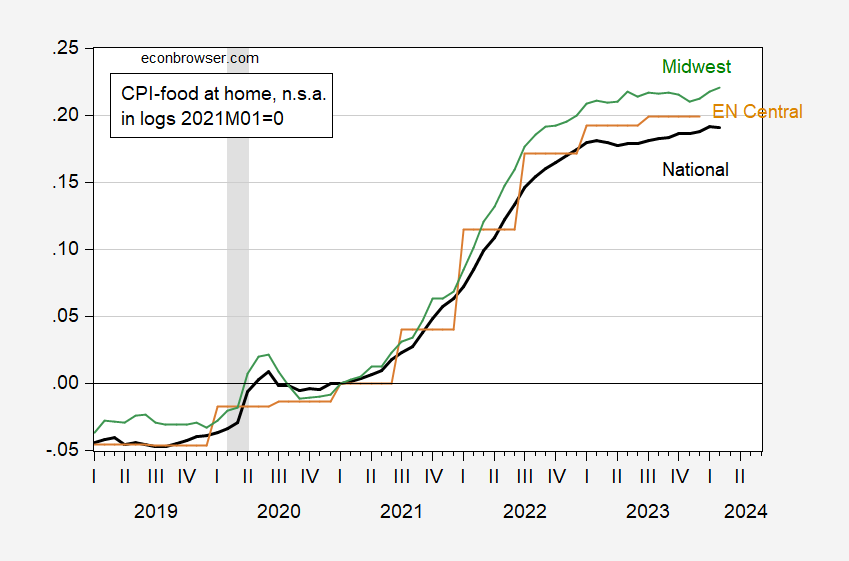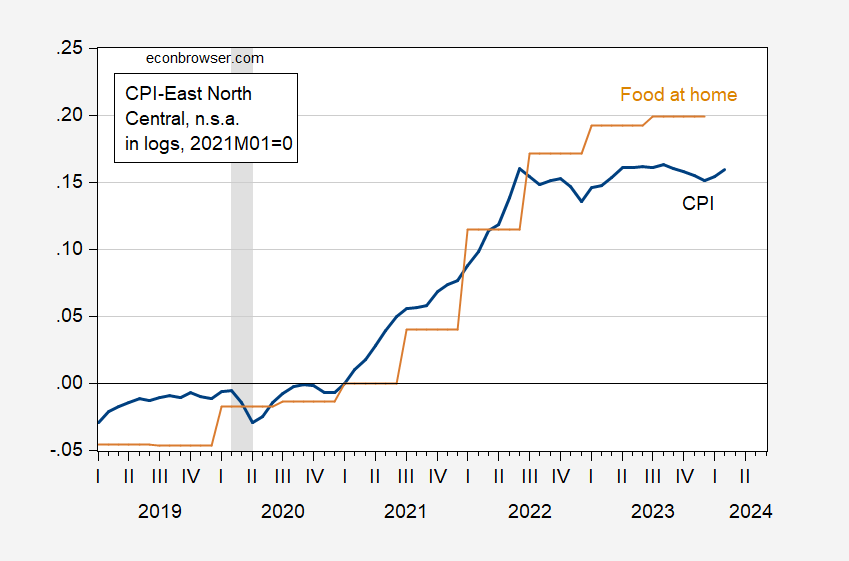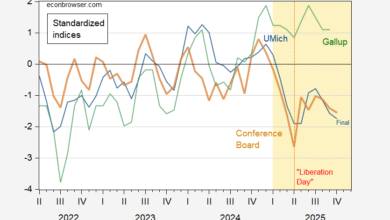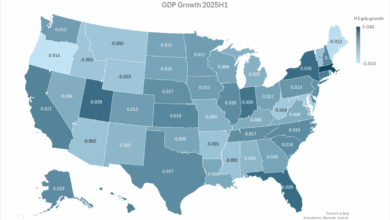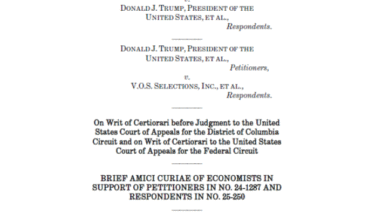
That article prompted me to wondered whether Wisconsin’s grocery prices had moved up faster than the Nation’s. They have!
…
“When Trump was president, there wasn’t inflation,” she said. “We could afford food.”
Affording food relies on both cost and income. We can kind of observe costs – although not specifically for Wisconsin. We can see them for East North Central (Wisconsin, Michigan, Illinois, Indiana, Ohio).
Figure 1 shows that food at home prices in East North Central have risen more than nationally, but less than the Midwest overall.
On the other hand, the cumulative gap between food prices and overall CPI is wider than at the national level.
In the last quarter of 2023, the gap was about 4.5 percentage points (i.e., from 2021M01 onward, food prices had risen 4.5 percentage points more than the overall price level). At the national level the corresponding gap was about 2.5 percentage points.
While Wisconsinites — well East North Central Midwesterners — have seen food prices rise, as of the second half of October 2023, Wisconsinites spent $49/week less on groceries than the national average of $270.
It’s also true that wages and salaries have increased over time, as compared to 2021. Food prices relative to per capita wages and salaries were as high in 2023Q1 as in 2020Q2. While they have since recovered, they are still lower in 2023Q3 (last data available) by about 6% relative to 2019Q4.
Why might prices have risen faster in East North Central (and Midwest) than nationally? I thought it might be grocery store concentration, but what little research I’ve seen (e.g., Cakir, et al., 2023) indicates an association between concentration (measured by a Herfindahl index) and price level, and not rate of change.
Source link

